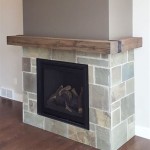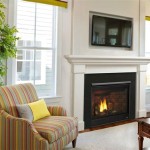Understanding the Electric Fireplace Blower Motor
Electric fireplaces offer a convenient and aesthetically pleasing alternative to traditional wood-burning fireplaces or gas inserts. One crucial component that contributes to the efficiency and performance of many electric fireplaces is the blower motor. This motor powers a fan or blower wheel, responsible for circulating heated air from the fireplace's heating element into the surrounding room. Understanding the function, types, maintenance, and potential issues associated with the electric fireplace blower motor is essential for maximizing the lifespan and effectiveness of your electric fireplace.
The primary purpose of the blower motor is to distribute the heat generated by the electric fireplace more evenly and efficiently throughout the room. Without a blower motor, the heat would primarily radiate directly from the fireplace's front, creating a hot spot in close proximity but failing to warm the rest of the space effectively. The blower motor draws cooler air from the room, passes it over the heating coils within the fireplace unit, and then forces the warmed air back into the room. This process of forced convection accelerates the heating process and creates a more consistent and comfortable temperature distribution.
The inclusion of a blower motor significantly enhances the energy efficiency of an electric fireplace. By actively circulating heated air, the fireplace can reach the desired room temperature more quickly, reducing the amount of time the heating element needs to operate at full power. This translates to lower energy consumption and cost savings over time. Furthermore, the blower motor allows for a wider range of temperature settings and control. Users can adjust the fan speed to regulate the airflow and heat output, tailoring the fireplace's performance to their specific needs and preferences.
Types of Electric Fireplace Blower Motors
Electric fireplace blower motors are not all created equal; they come in various designs and configurations, each with its own strengths and weaknesses. Understanding the different types of blower motors can help in selecting the appropriate replacement motor or understanding the characteristics of the motor in an existing fireplace unit.
One common type is the shaded-pole motor. Shaded-pole motors are known for their simple construction, reliability, and relatively low cost. They are generally used in smaller electric fireplaces and offer a reasonable level of performance. However, shaded-pole motors are typically less efficient than other types of motors, and their speed control options are limited. They are also often louder than other types, producing a noticeable hum during operation. Their lower efficiency also means they can generate more heat themselves, which can contribute to overall fireplace temperature.
Another type is the centrifugal blower motor, which utilizes a squirrel cage-style fan to move large volumes of air at relatively low pressure. These motors are often found in larger electric fireplaces and are known for their quiet operation and efficient airflow. Centrifugal blowers can also be designed to be more energy-efficient than shaded-pole motors. They tend to be more expensive upfront, but their superior performance and longevity can make them a worthwhile investment. The design of the fan itself is also important. A well-designed fan will move more air with less noise and energy consumption.
Brushless DC (BLDC) motors are becoming increasingly common in high-end electric fireplaces. BLDC motors offer several advantages, including high efficiency, long lifespan, and precise speed control. They are also typically much quieter than shaded-pole motors and can be programmed to deliver variable airflow based on the desired temperature or user settings. While BLDC motors are more expensive than other motor types, their performance and features make them an attractive option for those seeking the best possible experience.
The choice of blower motor type depends on several factors, including the size and heating capacity of the electric fireplace, the desired level of performance, noise sensitivity, and budget constraints. By understanding the characteristics of each motor type, consumers can make informed decisions that align with their specific needs and preferences.
Common Problems and Troubleshooting
Like any mechanical component, electric fireplace blower motors can experience problems over time. Identifying and addressing these issues promptly can prevent further damage and ensure the continued functionality of the fireplace.
One common problem is a noisy blower motor. This can manifest as a humming, buzzing, rattling, or grinding sound. Several factors can contribute to a noisy motor. Loose screws or mounting hardware can cause vibrations that amplify the noise. Debris accumulated within the blower assembly, such as dust, pet hair, or lint, can obstruct the fan blades and create friction, resulting in noise. Worn-out bearings within the motor can also produce a grinding or squealing sound. To troubleshoot a noisy motor, first, inspect the blower assembly for loose hardware and tighten any screws or bolts that are found to be loose. Next, clean the blower assembly thoroughly, removing any accumulated debris. If the noise persists after cleaning, the bearings may need to be lubricated or replaced. In some cases, the entire motor may need to be replaced if lubrication doesn't remedy the issue.
Another common problem is a blower motor that is not working at all. This can be caused by a variety of issues, including a blown fuse, a faulty switch, a loose wire connection, or a completely failed motor. Start by checking the fuse or circuit breaker that powers the electric fireplace. Replace the fuse or reset the breaker if necessary. Next, inspect the switch that controls the blower motor. Use a multimeter to test the switch for continuity. If the switch is faulty, it will need to be replaced. Check all wire connections to the blower motor, ensuring that they are secure and free from corrosion. If all other components are functioning correctly, the motor itself may be defective and require replacement.
Reduced airflow is another symptom of a potential problem. Even if the motor is running, the airflow might be significantly reduced, resulting in diminished heating performance. This can be caused by a clogged air filter, a blocked air intake, or a weakened motor. Inspect the air filter and clean or replace it if it is dirty. Ensure that the air intake vents are not blocked by furniture or other obstructions. If the motor is running weakly, it may be nearing the end of its lifespan and need to be replaced.
Overheating can also be an issue, potentially indicating a problem with the motor. If the motor becomes excessively hot to the touch, it could be a sign of internal friction, a short circuit, or a lack of lubrication. Discontinue use immediately and inspect the motor for any obvious signs of damage or overheating. Overheating can be a fire hazard and should be addressed promptly. In most cases, an overheating motor will need to be replaced.
Maintenance and Longevity
Proper maintenance is crucial for extending the lifespan of an electric fireplace blower motor and ensuring its optimal performance. Regular cleaning and lubrication can prevent many common problems and keep the motor running smoothly.
One of the most important maintenance tasks is cleaning the blower assembly regularly. Dust, pet hair, and other debris can accumulate within the blower assembly, obstructing the fan blades and reducing airflow. Use a vacuum cleaner with a brush attachment to remove any accumulated debris from the fan blades, the motor housing, and the air intake vents. It is generally recommended to clean the blower assembly at least once every three to six months, depending on the frequency of use and the amount of dust in the environment. More frequent cleaning may be necessary in homes with pets.
Lubrication is also essential for keeping the blower motor running smoothly. Over time, the bearings within the motor can dry out, causing friction and noise. Apply a few drops of electric motor oil to the bearings periodically. Consult the manufacturer's instructions for specific lubrication recommendations. Avoid using excessive amounts of oil, as this can attract dust and dirt, which can further exacerbate the problem. Some motors are sealed and do not require lubrication.
Proper ventilation is also important for preventing overheating. Ensure that the air intake vents are not blocked by furniture or other obstructions. This will allow the motor to draw in sufficient air to cool itself, preventing it from overheating. The fireplace should be placed in a location that allows for adequate airflow around the unit.
Replacing the air filter regularly is another simple yet effective maintenance task. A dirty air filter can restrict airflow and reduce the efficiency of the blower motor. Replace the air filter according to the manufacturer's recommendations. Using the correct type of air filter is also important. Using a filter that is too restrictive can also negatively impact airflow.
Finally, periodic inspection can help identify potential problems early on. Listen for unusual noises, check for reduced airflow, and monitor the motor's temperature. Addressing these issues promptly can prevent further damage and extend the lifespan of the motor. If any problems are detected, take appropriate action immediately, such as cleaning the blower assembly, lubricating the bearings, or replacing the motor.

Electric Fireplace Fan Motor Accessories Repair Parts 40mm Ca

120925 30 Blower Assembly For Electric Fireplace W Heater 120927 11

Fireplace Fan Blower With Heating Element For Twin Star Twinstar Elect Grillpartsreplacement Bbq Parts Retailer

Quiet Electric Log Fireplace Stove Heat Heater Blower Insert Squirrel Fan Motor
/product/84/651718/1.jpg?strip=all)
Generic Electric Fireplace Fan Motor Parts 40mm Repair Jumia Ghana

Pleasant Hearth Gray Steel Blower In The Fireplace Accessories Department At Com

Blower Squirrel Fan Motor Assembly 120v For Amish Heat Surge Electric Fireplace

Jimee Motor China Ventilating Fan Manufacturers Oem Quality Cpu Blower Jm 40 300 2 Black Color Elevator Cross Flow For Heater Electric Fireplace Villa

Fireplace Fan Motor For Blower Accessory Set Electric Generators Com
Related Posts








